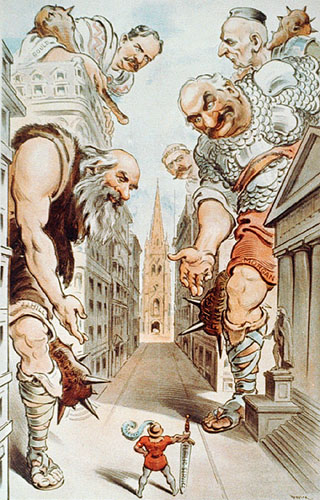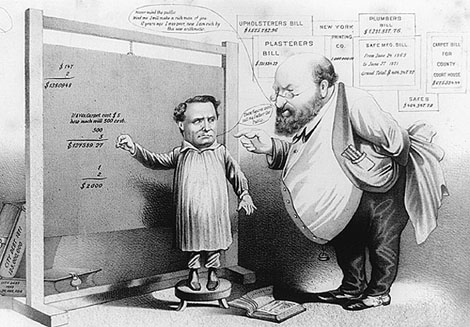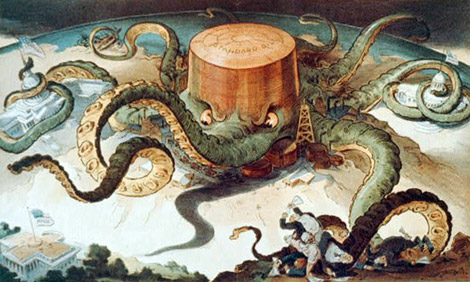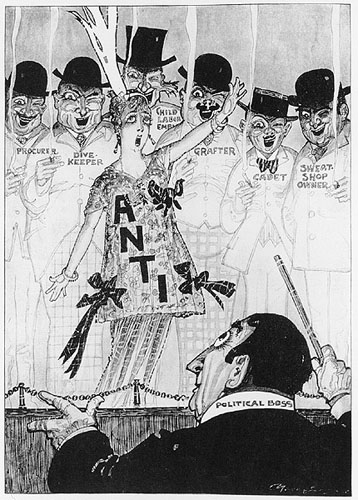Have you ever considered political cartoons and posters? How do humor and art contribute to our understanding of American culture and society? Can we understand our national identity and collective history more fully by examining something as deceptively simple as cartoons? Why do we express our political positions through cartoons in the first place?
Take a look at some of the cartoons below (from our very on FOF database). Some of you artists out there MUST find these fascinating, right? If you're interested, I've also recommended some further reading at the bottom of this page. Happy thinking!
 |
| This political cartoon, which appeared in the humor magazine Puck in January 1904, is entitled "Jack and the Wall Street Giants." It shows President Theodore Roosevelt facing giants of business and finance J. P. Morgan, James J. Hill, John D. Rockefeller, and Jay Gould. Roosevelt is holding a typical progressive sword: public service."Theodore Roosevelt: 'Jack and the Wall Street Giants'." American History Online. Facts On File, Inc. |
 |
| In 1871 Tammany Hall, a powerful political machine that dominated New York City politics from the 1850s until the 1930s, was exposed for its widespread corruption under the leadership of William M. Tweed. This cartoon depicts Boss Tweed as a bullying teacher giving New York City comptroller Richard B. Conally a lesson in wildly inaccurate arithmetic."Cartoon Satirizing the Tammany Hall Political Machine." American History Online. Facts On File, Inc. |
Association of American Editorial Cartoonists
Cartoon America from the Library of Congress
You can also come check out this book from the FSHA Library:



No comments:
Post a Comment